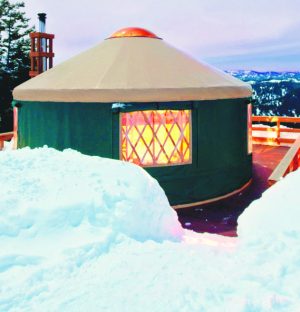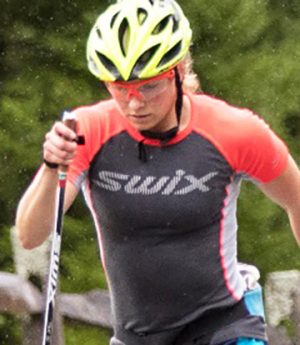September 29, 2005 – Another fantastic week on the Haig glacier has come and gone, and team’s 2010 and 2014 got a serious blast of winter weather which made for the best tracks that I’ve ever experienced up there.
From technique and nutrition to getting over injuries, things are shaping up for a great fall. And now, I’d like to share some helpful hints as to what most of our team is working on these days in terms of nutrition…
Any article that I could write would invariably be about attitude. I’ve come to see the day as a series of decisions, and the choices I make can either bring me a step closer to my goals as a skier, or another step away. The body we are in today, and the life we are living is a product of the millions of choices we’ve already made. But the past is history and the future, up to you. It’s the present that counts and we can start making better decisions one step at a time.
Nowhere is this truer than in training and nutrition – as nutrition coach John Berardi PhD. emphasized to us a few weeks ago in Canmore. For nutrition and beyond; take a good hard look at whatever is holding you back from the life you want to live and get to work on some solutions!
Dr Berardi’s message – about nutrition and life is this: find solutions. A professor at the University of Texas (Austin, Texas), Dr Berardi is all about helping people find those solutions and his “No BS†attitude is a good fit with our team.
As we now understand them, the main concepts hinge on the idea that using nutrition to improve our body composition and speed our recovery from hard workouts (so that we can do more hard workouts) is a function of choosing the right food timing and the right food type.
TIMING – One easy thing you can do that doesn’t even require you to change the type of food you already eat, is to work on your nutrient timing. The main thing is to eat a good meal every 2-3 hours, no matter what. Research at the University of Georgia supports this and now we understand that lunch and dinner shouldn’t be as huge but rather balanced with recovery drinks, good breakfasts, and other snacks throughout the day. By emphasizing these other meals, we’re improving our eating frequency.
Also, Dr Berardi’s research suggests that within the few hours after exercise, most of the carbohydrate ingested goes directly to replenishing the muscle. During the rest of the day, the body isn’t quite as economical with carbs (potentially leading to fat gain or slowing fat loss). For this reason we are now eating our rice, pasta, quinoa, and potatoes in larger quantities in the after training meal (usually lunch after a morning workout) and eating more fruits and veggies during the other meals.
Sure, it’s been difficult to cut down our grainy oatmeal and red river breakfasts, but now we race to the frying pans in the morning to each fry up an omelet with one whole egg, 100-200ml of egg whites from a carton, some fruit, and some veggies. Instead of overeating on morning carbs to fuel our workouts, our workout nutrition fuels our performance instead. And, as my teamate has learned, the oatmeal is good – she just eats her precious bowl as soon as she gets back from a workout. Me, I like a bowl of it with some dairy for protein before my afternoon workout. Those carbs fit in great as I’ve already worked out once and am still within my carb window (open for up to 6 hours after exercise).
As for treat-time, Dr Berardi doesn’t tell us to stay away from them. Instead, he recommends that the sweet-tooth get its hit in the post-workout window as well. As Berardi says, “there are no bad foods, just bad times to eat certain foods. The right time to eat sugar is immediately after exercise – with a balanced meal – and the wrong time is the rest of the day.†Dessert at lunch? Fine by me.
TYPE – Berardi has us emphasize a higher protein diet. By shifting some of our intake from carbs to protein, we can increase fat burning during training, leading to less body fat and to a sparing of muscle carbohydrate.
In order to ensure a higher protein intake, we try to eat lean complete protein (complete protein comes from an animal or is an animal) during each meal. This usually ensures that we get about 2g of protein for every kg of body weight per day. So for my 65kg, I’m looking to eat at least130g of protein per day. Getting 30 grams from my recovery drink helps me meet that goal.
Berardi also recommends that we eat vegetables with every meal and eat each of the “21 Super Foods†at least three times/week (we have a checklist up on the fridge to see how we’re doing with this one). Here are the 21 Super Foods:
-Lean Red Meat
-Salmon
-Omega 3 Eggs
-Low fat, plain yogurt
-Supplemental Protein
-Spinach
-Tomatoes
-Cruciferous Vegetables
-Avocados
-Mixed Berries
-Oranges
-Mixed Beans
-Quinoa
-Whole Oats
-Mixed Nuts
-Olive Oil
-Fish Oil
-Flax Seeds
-Green Tea
-Liquid Exercise Drinks
-Greens Plus
I’ll admit, it’s been a challenge for me to summarize what we learned in a 4-hour presentation and after some individual coaching. So, if it’s still about as clear as mud, I would highly recommend a visit to www.johnberardi.com to get your info as well as some cool recipes.
In the end, these are just a few of the ideas that we’re working with now. As we keep track of how we’re feeling at training, one thing I feel great about is taking another step as an athlete so that at the end of the day I know I did everything that I could to perform my best. If this helps, that’s great, and if not I know that morning oatmeal will always be there for me.
It’s the process of learning more and seeing just how far my body and mind can go that makes this kind of stuff fun, as well sharing the whole process with a team. Best of all, it’s empowering to take something like energy level during training, or body composition and mess around with the variables that affect it to see if I can make an improvement. Improvement, however small, is the daily, monthly, and yearly return on being an athlete, and striving for it is its own reward.
So get to work on those solutions and crank your quality of training and life up another notch as we head into the fall and start getting ready to race!






![National camp action [P]...](https://skitrax.com/wp-content/uploads/2019/08/Duluth-4-2019-08-08-at-10.46.51-AM-300x246.png)
![Matt Liebsch on the CXC Elite Team [P] CXC...](https://skitrax.com/wp-content/uploads/2019/08/Matt-Liebsch-CXC.2-525x700.4-300x267.jpg)
![Dan LaBlanc [P]...](https://skitrax.com/wp-content/uploads/2019/08/Dan-LaBlanc-img_1855.3.jpg)
